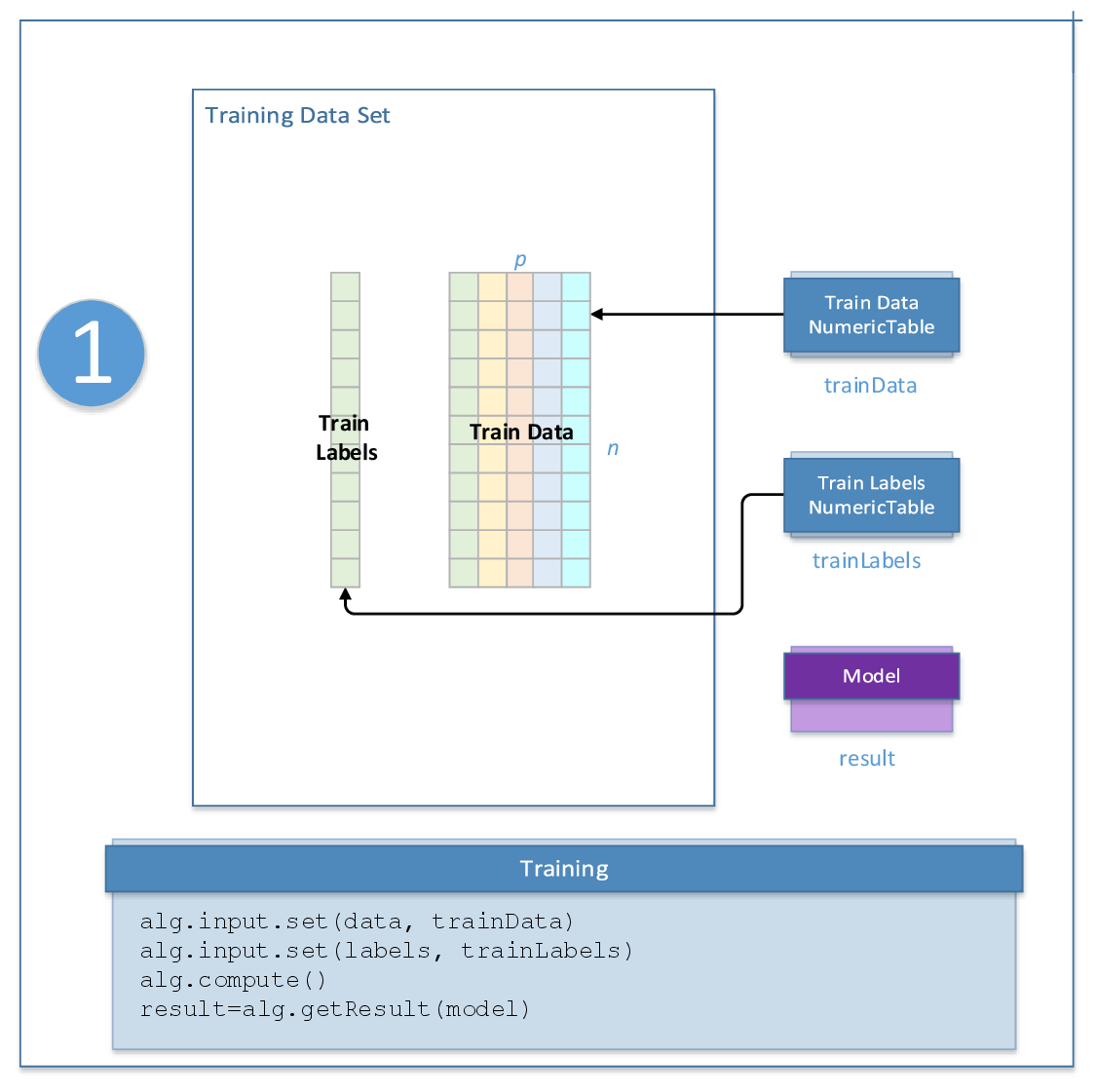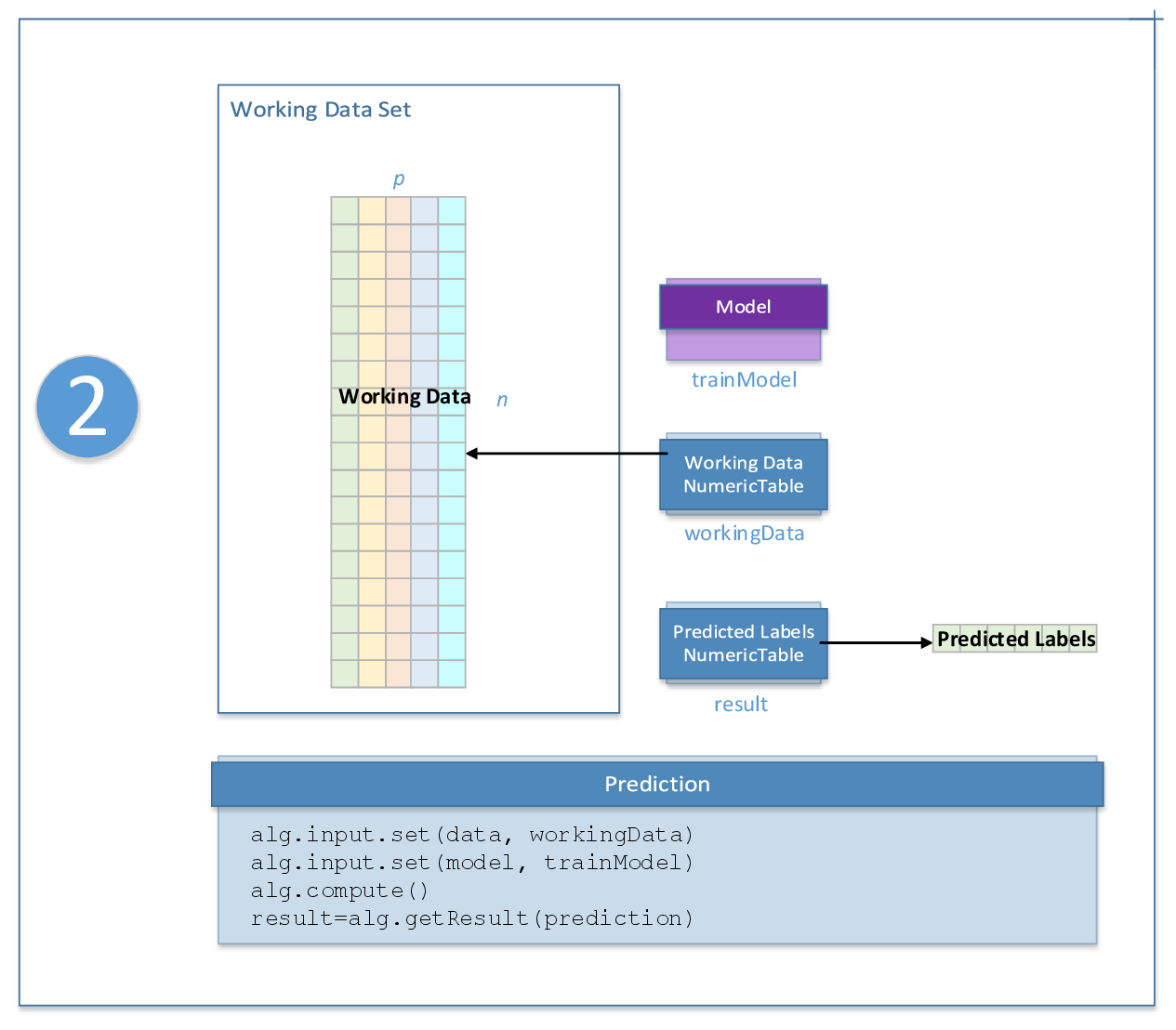Classification Usage Model¶
A typical workflow for classification methods includes training and prediction, as explained below.
Algorithm-Specific Parameters¶
The parameters used by classification algorithms at each stage depend on a specific algorithm. For a list of these parameters, refer to the description of an appropriate classification algorithm.
Training Stage¶

Classification Usage Model: Training Stage¶
At the training stage, classification algorithms accept the input described below.
Pass the Input ID as a parameter to the methods that provide input for your algorithm.
For more details, see Algorithms.
Input ID |
Input |
|---|---|
|
Pointer to the \(n \times p\) numeric table with the training data set.
This table can be an object of any class derived from |
|
Weights of the observations in the training data set. Argument is optional, but it is required by the selected algorithms. |
|
Pointer to the \(n \times 1\) numeric table with class labels. This table can be an object of any class derived from NumericTable except |
At the training stage, classification algorithms calculate the result described below.
Pass the Result ID as a parameter to the methods that access the results of your algorithm.
For more details, see Algorithms.
Result ID |
Result |
|---|---|
|
Pointer to the classification model being trained. The result can only be an object of the |
Prediction Stage¶

Classification Usage Model: Prediction Stage¶
At the prediction stage, classification algorithms accept the input described below.
Pass the Input ID as a parameter to the methods that provide input for your algorithm.
For more details, see Algorithms.
Input ID |
Input |
|---|---|
|
Pointer to the \(n \times p\) numeric table with the working data set.
This table can be an object of any class derived from |
|
Pointer to the trained classification model. This input can only be an object of the |
At the prediction stage, classification algorithms calculate the result described below.
Pass the Result ID as a parameter to the methods that access the results of your algorithm.
For more details, see Algorithms.
Result ID |
Result |
|---|---|
|
Pointer to the \(n \times 1\) numeric table with classification results (class labels or confidence levels). Note By default, this table is an object of the |
|
A numeric table of size \(n \times \text{nClasses}\), containing probabilities of classes computed when the
|
|
A numeric table of size \(n \times \text{nClasses}\), containing logarithms of classes’ probabilities computed when the Note By default, this table is an object of the |
